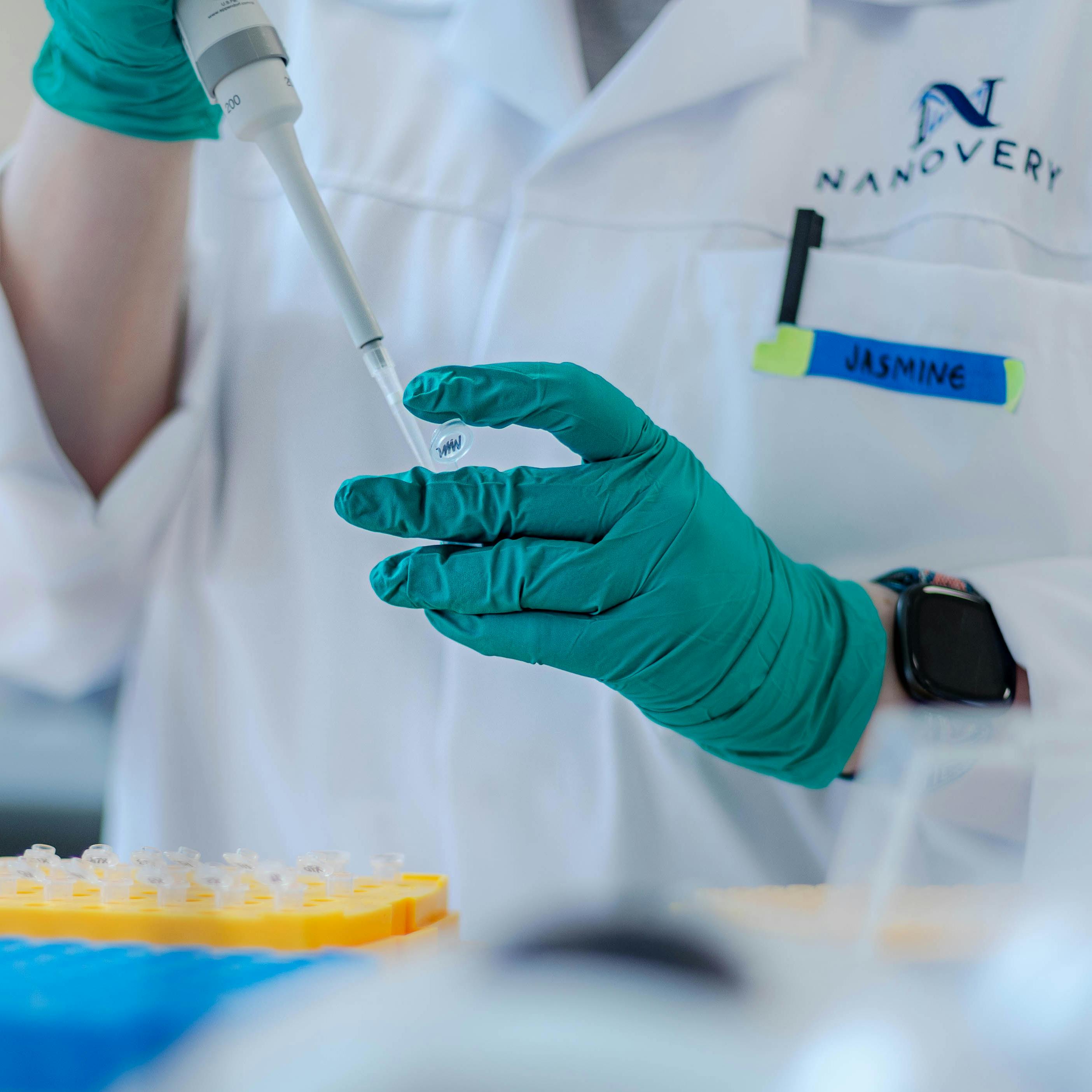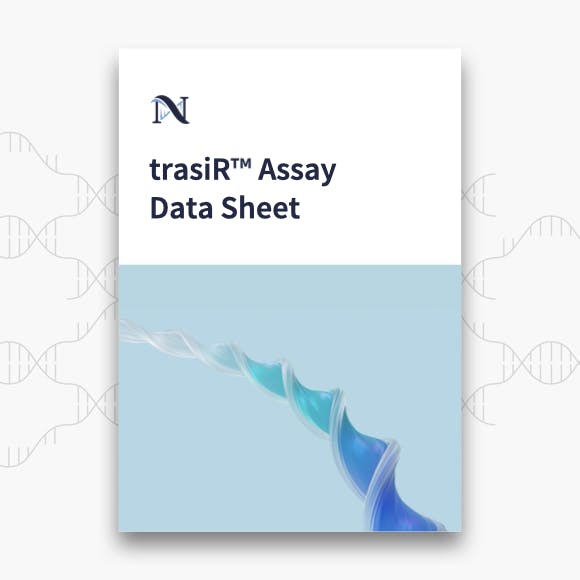

Transforming Small Interfering RNA (siRNA) Bioanalysis
trasiR™ for reliable siRNA quantification made easier

Works directly in complex biological media
Eliminate noise from varying extraction efficiencies.

Fast and simple workflow
Minimal protocol steps and measurement on a fluorescence plate-reader.

Built for siRNA
Overcomes limitations of other techniques from unique challenges posed by siRNA.

Suits a wide variety of chemical modifications.
Including standard Phosphorothioate (PS), 2’-O-Methoxyethyl (MOE), 2’-O-Methyl (OMe) modifications.
Introducing trasiR™ for pharmacokinetic bioanalysis of small interfering RNA
trasiR™ offers quantification Small Interfering RNA Therapies (siRNA) directly in biological samples such as blood serum. Using Nanovery's patented Nucleic Acid Nanorobotics (NANs) platform, trasiR™ comes as a reagent, offering an enzyme-free and isothermal assay format designed for simplicity and reliability.
trasiR™ can be easily tailored to support a range of ADME, biodistribution and pharmacokinetic (PK) studies in bioanalysis, with the flexibility to accommodate various siRNA patterns, chemical modifications, chemical conjugates and sample types.
trasiR™ compared to standard quantification techniques for siRNA





Specific metabolite detection
No custom reagents needed
Specific metabolite detection
High throughput
High sensitivity
Direct to sample
Simple protocol
Robust and reproducible
Low working volume
Chromatography
Poor sensitivity
Ruggedness
Low throughput
Probe design
Chromatography
Low throughput
Probe design
Specificity
Analyte specific probes needed
Long assay development time
Laborious protocol
Primer design
Specificity
Experiencing these issues in PK assays for antisense oligonucleotides?

Chemical modifications
siRNA are chemically modified to boost their stability, uptake and target affinity. These modifications, including additional moieties for stability, targeting, and biodistribution, also interfere with the efficiency of enzymatic processes in qPCR, leading to inconsistencies in quantification.
trasiR™ assay is based on our proprietary NAN technology. It is distinctively enzyme-free and relies on nucleic acid hybridisation and strand displacement reactions, which makes it excel at consistently detecting siRNA. Read more about our technology (here).
RNA extraction efficiency
Long assay development times
Complex and Costly Equipment and protocols

Speak with our siRNA Specialist
Proven performance of trasiR™ according to ICH-M10 guidelines
Our DNA nanorobots demonstrate remarkable compatibility with chemical modifications, offering robust detection and precise quantification of antisense oligonucleotides. We validate the siRNA detection and quantification assay in line with ICH-M10 guidelines to guarantee high levels of accuracy, precision, and selectivity across biological matrices. You can find our full collection of validation data here.
Compatibility with chemical modifications in antisense therapies
The results below illustrate the robust detection capabilities of NANs across four sample types: 1) DNA, 2) RNA, and siRNA with 3) OMe, and 4) MOE modifications. These assays demonstrate excellent linear responses, enabling precise quantification within the low picomolar range. Small error bars indicate high accuracy, and the simplicity of data analysis highlights the practical efficacy of our technology in various bioanalytical settings.




Order custom bioanalytical assay for your siRNA
- Discuss your project requirements with our expert team.
- We will evaluate your siRNA's characteristics.
- Our team will prepare a proposal tailored to meet your needs.
- Get a complimentary evaluation license with every assay.


Download Full Product Features
Discover the precision and efficiency of the trasiR™ assay with our detailed specs and case studies.
Learn how our technology transforms ASO bioanalysis, offering a significant leap in simplicity and performance over alternative methods. Access our recent materials now to unlock the full potential of your research and development.